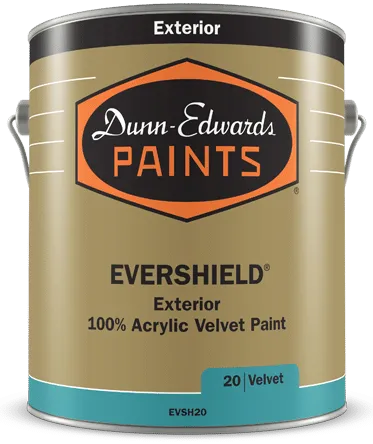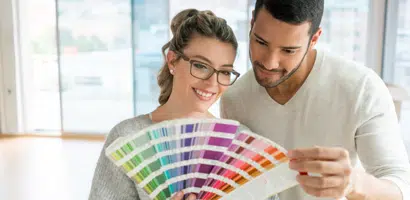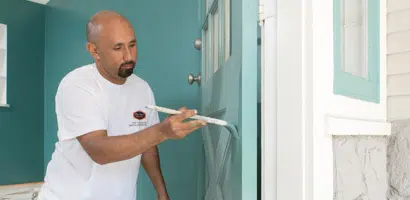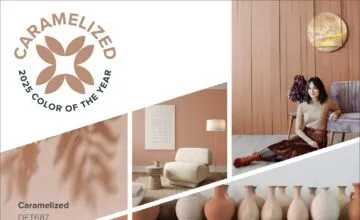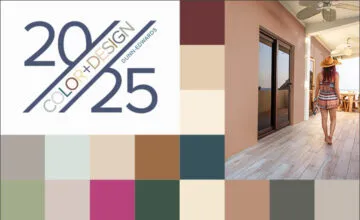Choosing Color Wisely
07/11/2015 | Dunn Edwards |
When it comes to choosing the right exterior paint, color plays an important and powerful role, as it can create or dramatically enhance attractive features of a home or commercial building. However, looking beyond aesthetics and more toward the practical side, the most essential thing to consider when choosing exterior colors is longevity.
It's true that paint technology has improved considerably in the last few years, yet it is a scientific fact that color selection has a strong influence on overall paint performance. This is because the amount of ultraviolet (UV) light absorbed or reflected by a color directly affects how long a paint job will last.
While dark colors on trim can provide a pleasant contrast and draw attention to architectural details, they are much more prone to fading. Dark colors also pose more maintenance problems because darker hues absorb heat and suffer more moisture problems than lighter shades. In addition, dark colors fade faster so they tend to be more difficult to touch up. Lighter colors do not suffer from the same issues and, therefore, last longer.
Here are other things to consider when choosing durable, long-lasting exterior paint colors:
Be aware of color limitations. Certain colors are not recommended for exterior use, simply because they cannot withstand the UV-rich Southwest, and others may not last long in your natural climate (desert vs. coastal, for example). In addition, some colors are alkaline-sensitive and should not be used on highly alkaline surfaces, such as new masonry. Most paint manufacturers have symbols or icons printed on the color chips that provide this information. Take time to find out which colors work best in your region.
Consider the exposure of the surface to be painted. The direction of sun exposure has a significant impact on color retention. For example, southern exposures receive the most UV light, which can result in the greatest color loss in paint. Western and eastern exposures receive less direct UV light and, therefore, are less vulnerable to color loss, while northern exposures are the least susceptible to color loss problems. Factoring in exposure when choosing color will help your paint job last.
Organic colors tend to fade more quickly than inorganic colors. Inorganic colors — such as beiges, browns, tans and other earth-tone colors — are more stable on exterior exposures, which explains why they are among the more popular hues in the Southwest. The pigments used in these nature-inspired colors are less likely to break down than the pigments in bolder, organic colors such as reds, blues, greens and yellows. This is especially true in dry, hot climates, including Arizona and Nevada, where the intense, UV exposure exerts a heavy toll on exterior paint.
Always use high-quality paints for superior color retention. All else being equal, high-quality paints are outstanding for holding their color when exposed to the elements. High-quality paints not only exhibit better adhesion to the surface to which they are applied, they are also more resistant to chalking — a process that can rob an exterior paint of its color. High-quality paints may cost a bit more at the start but they will more than pay for themselves with long-lasting vibrancy over time.
Picking the right paint color for your exterior is a big job so be sure to invest some time to ensure that your final choice pays off in the long run.
If you have questions, contact your local Dunn Edwards Property Service Representative or your local store.




